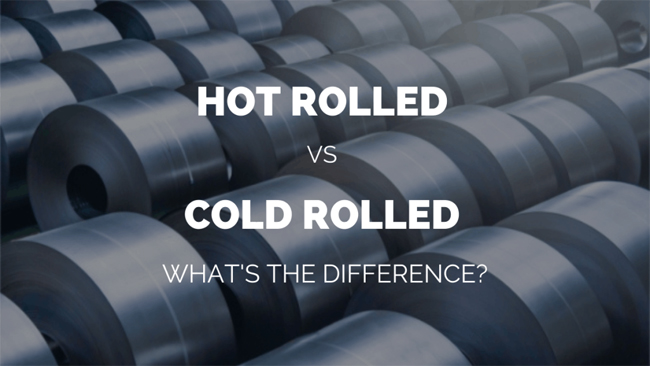Rolling is a metal forming process that employs the use of a series of rollers to alter the shape, improve the uniformity, and/or enhance the mechanical properties of materials. Rolled steel can be categorized into two types—hot rolled steel and cold rolled steel—which demonstrate distinct characteristics that make them suitable for different applications. When choosing a rolled steel material for a project, it is important to be aware of the differences between the two types and how they affect their performance.
Hot-rolled steel is steel that’s produced using extreme heat. The terms “hot-rolled steel” and “cold-rolled steel” don’t refer to a specific type of steel. Rather, they refer to the way in which steel is produced. With hot rolling, molten steel is pressed at extremely high temperatures, typically reaching or exceeding 1,700 degrees Fahrenheit. This is important because steel recrystallizes at roughly 750 degrees to 1,300 degrees Fahrenheit, allowing it to be reshaped. Once the hot-rolled steel has cooled, it’s ready for use (or to sell).
Cold rolled steel is essentially hot rolled steel that has gone through more processing. To get cold rolled steel, manufacturers generally take cooled-down hot rolled steel and roll it more to get more exact dimensions and better surface qualities.
But the term “rolled” is often used to describe a range of finishing processes such as turning, grinding, and polishing, each of which modifies existing hot rolled stock into more refined products. Technically, “cold rolled” applies only to sheets that undergo compression between rollers. But forms like bars or tubes are “drawn,” not rolled. So hot rolled bars and tubes, once cooled, are processed into what are called “cold finished” tubes and bars.
Cold rolled steel can often be identified by the following characteristics:
• More finished surfaces with closer tolerances.
• Smooth surfaces that are often oily to the touch.
• Bars are true and square, and often have well-defined edges and corners.
• Tubes have better concentric uniformity and straightness.

Hot rolled steel comes with a scaly surface, slightly rounded edges and corners and the surface is non-oily. Cold rolled steel has an oily or greasy finish, very smooth surface, and very sharp edges.
Hot rolled steel typically requires much less processing than cold rolled steel, which makes it a lot cheaper. Because hot rolled steel is allowed to cool at room temperature, it’s essentially normalized—meaning it’s free from internal stresses that can arise from quenching or work-hardening processes.
Hot rolled steel is ideal where dimensional tolerances aren’t as important as overall material strength, and where surface finish isn’t a key concern. Where surface finish is a concern, scaling can be removed by grinding, sand blasting, or acid-bath pickling. Once scaling has been removed, various brush or mirror finishes can also be applied. Descaled steel also offers a better surface for painting and other surface coatings.
With better surface characteristics than hot rolled steel, it’s no surprise that cold rolled steel is often used for more technically precise applications, or where aesthetics are important. But due to the additional processing for cold finished products, they come at a higher price.
In terms of physical characteristics, cold rolled steels are typically harder and stronger than standard hot rolled steels. As the metal is shaped at the lower temperatures, the steel’s hardness, resistance against tension breaking, and resistance against deformation are all increased due to work hardening.
These additional treatments, however, can also create internal stress within the material. This can cause unpredictable warping if the steel is not stress relieved prior to cutting, grinding, or welding.
Hot rolled steel tends to be cheaper than cold rolled steel because it is manufactured without any delays in the process and does not require reheating like cold rolled steel. It can be used in applications where precise shapes and tolerances are not required, such as:
• Structural Components (Railroad Tracks, I-Beams, Sheet Metal)
• Agricultural Equipment
• Metal Buildings
• Stampings
• Automotive Frames
Cold rolled steel is used in applications where tolerances, surface conditions, concentricity, and straightness are factors. It also offers a more aesthetic and visually appealing surface. Other applications include:
• Home Appliances
• Metal Furniture
• Aerospace Structural Components
• Automotive Parts
If you require large structural components, you will most likely need the hot-rolled steel process to create the parts. For smaller parts that require more precise and durable qualities, then the cold-rolled steel process is the way to go. If you have questions about which mill process you need for your project, feel free to contact Hebei Shineyond Group.